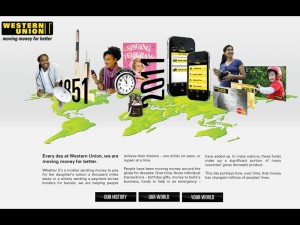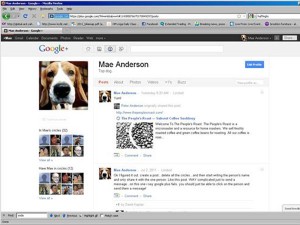Associated Press
10:41 am | Sunday, July 3rd, 2011
NADA, India — Boommi Gowda used to fear the night. Her vision fogged by glaucoma, she could not see by just the dim glow of a kerosene lamp, so she avoided going outside where king cobras slithered freely and tigers carried off neighborhood dogs.
But things have changed at Gowda’s home in the remote southern village of Nada. A solar-powered lamp pours white light across the front of the mud-walled hut she shares with her three grown children, a puppy and a new born calf. Now during the night time, she can cook, tend to her livestock and get water from a nearby well.
“I can see!” Gowda said, giggling through a 100-watt smile. In her 70 years, this is the first time she has had any kind of electricity.
Across India, thousands of homes are receiving their first light through small companies and aid programs that are bypassing the central electricity grid to deliver solar panels to the rural poor. Those customers could provide the human energy that advocates of solar power have been looking for to fuel a boom in the next decade.
With 40 percent of India’s rural households lacking electricity and nearly a third of its 30 million agricultural water pumps running on subsidized diesel, “there is a huge market and a lot of potential,” said Santosh Kamath, executive director of consulting firm KPMG in India. “Decentralized solar installations are going to take off in a very big way and will probably be larger than the grid-connected segment.”
Next door to the Gowdas, 58-year-old Iramma, who goes by one name, frowned as she watched her neighbors light their home for the first time. At her house, electrical wiring dangles uselessly from the walls.
She said her family would wait for the grid. They’ve already given hundreds of dollars to an enterprising electrician who wired her house and promised service would come. They shouldn’t have to pay even more money for solar panels, she insisted.
But she softened after her 16-year-old son interrupted to complain he was struggling in school because he cannot study at night like his classmates.
“We are very much frustrated,” she said. “The children are very anxious. They ask every day, ‘Why don’t we have power like other people?’ So if the grid doesn’t come in a month, maybe we will get solar, too.”
No electricity
Despite decades of robust economic growth, there are still at least 300 million Indians — a quarter of the 1.2 billion population — who have no access to electricity at home. Some use cow dung for fuel, but they more commonly rely on kerosene, which commands premium black-market prices when government supplies run out.
They scurry during daylight to finish housework and school lessons. They wait for grid connections that often never come.
When people who live day-by-day on wage labor and what they harvest from the land choose solar, they aren’t doing it to conserve fossil fuels, stop climate change or reduce their carbon footprints. To them, solar technology presents an elegant and immediate solution to powering everything from light bulbs and heaters to water purifiers and pumps.
“Their frustration is part of our motivation. Why are we so arrogant in deciding what the poor need and when they should get it?” said Harish Hande, managing director of Selco Solar Light Pvt. Ltd.
The company, which is owned by three foreign aid organizations, has fitted solar panels to 125,000 rural homes in Karnataka state, including the Gowdas’, outside the west coast port of Mangalore.
Getting the technology to low-income customers is not easy. They need help with everything from setting up their first bank accounts and negotiating loans to navigating the fine print of payment contracts.
To find new clients, agents must go door-to-door in remote settlements, sometimes crossing rivers, hiking mountains or wading through wetlands to reach them.
But the sales pitch leads to reliable profits. Solar panels take little space on a rooftop, the lights burn brighter than kerosene lamps and they don’t start forest fires or get snuffed in strong winds. Unlike central power, solar units don’t get rationed or cut.
Buying solar panels is more expensive than grid electricity, but for people off the grid it compares well with other options. One of Selco’s single-panel solar systems goes for about $360, the same or less than a year’s supply of black-market kerosene. And government subsidies mean customers actually pay less than $300.
In two years, India’s government hopes the off-grid solar yield will quadruple to 200 megawatts — enough to power millions of rural Indian homes with modest energy needs.
Boommi Gowda’s family signed up for its solar system within weeks of seeing one at the home of neighbor Babu Gowda, who is not related, but shares the common regional last name.
“With kerosene, you have to carry the lamp around wherever you go. The light is dim, and smoke fills the room and spoils the paint,” said Babu Gowda, a sprightly 59-year-old.
He finally decided on solar after losing his dog to a tiger from the neighboring national park. Now light from his home wards off predators.
“I kept waiting and thinking the grid would come, and after years I was angry. But now I’m thrilled,” he said. “Now we have light. We can move on, maybe expand with another solar panel and get a TV.”
Solar mission
What’s predicted for India’s solar market is not unlike the recent explosion in cell phones, as villagers and slum-dwellers alike embraced mobile technology over lumbering landline connections. There is now at least one mobile phone link for every two people in the country.
The government has pushed for manufacturers and entrepreneurs to seize the opportunity. Its solar mission — an 11-year, $19 billion plan of credits, consumer subsidies and industry tax breaks to encourage investment — is fast becoming a center piece of its wider goal for renewable sources, including wind and small hydropower, to make up 20 percent of India’s supply by 2020. Solar alone would provide 6 percent — a huge leap, since it makes up less than 1 percent of the 17 gigawatts India gets from renewables alone. The federal government leads a massive campaign titled “Light a Billion Lives” to distribute 200 million solar-powered lanterns to rural homes, while also supporting the creation of so-called “solar cities” with self-contained micro-grids in areas where supply is short.
Solar power is making inroads in smaller ways as well.
Near Nada, some schools send students home with solar-charged flashlights to study at night, and the temple town of Dharmasthala, visited by 10,000 pilgrims a day, offers free water purified through solar filtration.
Another Hindu temple in the southern state of Andhra Pradesh boasts one of the world’s largest solar-powered kitchens, preparing 30,000 meals a day, while western Gujarat state has experimented with a solar crematorium. Even in the Himalayan frontier state of Arunachal Pradesh, where the sunshine is not India’s brightest, Buddhist monks have installed solar panels to heat water at the 330-year Tawang Monastery.
Solar panels are becoming a must-have luxury item on dowry lists, even for those who have electricity but are annoyed by power cuts. And the capital of New Delhi requires hotels, hospitals and banquet halls to have solar water-heating systems.
Even Tata Power, India’s energy giant and main supplier of coal-sourced grid power, is eyeing the off-grid market while it plans large solar and wind installations to feed into the network.
“Decentralized and distributed power from renewables is where we see a lot of growth. There are many suitable technologies. All that’s needed are entrepreneurs,” Tata’s chief sustainability officer Avinash Patkar said.
Renewable energy
India’s government is desperate to expand its energy options as its fast-moving economy faces chronic electricity shortages. Last year’s 10 percent shortfall is expected to increase to 16 percent this year, according to the Central Electricity Authority. Within 25 years, India must increase electricity production fivefold to keep up with its own development and demand, the World Bank says.
India is planning new nuclear plants and quickly building more coal-firing plants, but it’s also working to take better advantage of its renewable energy opportunities. It has been named the world’s third most attractive destination for renewable energy investment, after the U.S. and China, according to two separate reports by global consulting firms KPMG and Ernst & Young.
Western states like Gujarat and Rajasthan get the full brunt of the sun, with famed deserts and scrublands filled with sand dunes, camels and residents who spend hours fetching water from wells. These states are luring big projects for solar fields to plug into the grid.
But most new grid capacity will be sucked up by industry, leaving little for the poor who live in off-grid desert outcrops, mountain hamlets and jungle villages like Nada. For them, the surest way to get electricity anytime soon may be to get a solar panel and make it themselves.
Change in lifestyle
P.N. Babu, a 51-year-old laborer who supplements his wages by tapping sap from rubber trees, finally stopped waiting for the grid when he saw his 14-year-old son’s eyes tearing as he tried to read by lamp.
“My children are too important,” Babu said as the sun set in Nidle village, about 10 kilometers (six miles) south of Nada.
Normally, it is so dark not even moonlight cuts through the dense canopy of palms overhead. But on the family’s first night with solar electricity, the house was ablaze.
The family took turns praying, elated they could see the Hindu icons of Lords Krishna and Ganesh by the light.
“When school starts again, I am ready now to get high scores,” Babu’s son Suresh said. “I couldn’t see the words in the book before, with the smoke and the tears.”
With the lights on, Suresh grabbed his sketchbook, filled with fanciful drawings of tigers, hippos, flowers and water jugs. He opened to a blank page and quickly outlined a modest house like his own, complete with a neatly swept yard and jungle gardens growing wild.
He finished by drawing the small box of a solar panel atop the roof.


